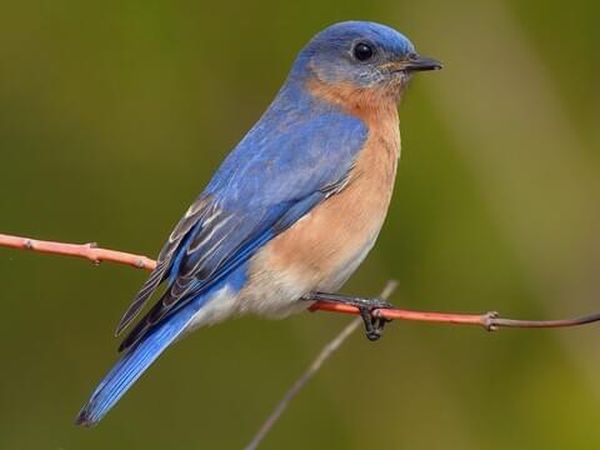
The bluebird has a brilliant blue color. With its sweet voice and docile disposition, it was one of the most common birds some fifty years ago. Since then, the bluebird's population has dwindled approximately 90% due to a few new feisty competitors and the severe loss of natural nesting sites to land development.
The wide-spread use of man-made bluebird houses has already begun to bring back the once-great bluebird population, but the rescue of these wonderful birds is not yet complete. You can help in this endeavor by creating a bluebird habitat on your property.
Mounting Your Bluebird House
The selection of a proper location for mounting your bluebird house is critical. Bluebirds do best in a reasonably open area with a few scattered trees. Open fields work well as long as there are fences or other items for the bluebirds to perch on. Bluebirds do not like to nest in wooded areas. Instead, they prefer to dwell along the edge of a forest or in an open clearing.
Bluebirds rarely nest within urban areas, except at their outer fringes because of the competition for food from starlings and sparrows.
Bluebirds will use birdhouses mounted at almost any height, but very low mounting increases the danger of predators and very high mounting invites house sparrows. High mounting also makes the birdhouse difficult to clean. As a general rule, the best height for the bluebird house is 5 to 7 feet above the ground.
It is best not to paint or treat the natural wood of the house or place it in an area where you will be using pesticides. When first leaving the nest, young bluebirds instinctively fly to a tree or other item that will allow them to perch up off the ground. It is recommended that you face the bluebird house toward a tree with low branches, a large bush, or a relatively close fence.
For your birdhouse to be successfully used by bluebirds, it is very important to keep a watch on its occupants. It is especially important to run off any sparrows who may have a desire to take over the house. Opening the birdhouse for a quick inspection will not frighten or harm the bluebirds. But don't open a bluebird house after the nestlings are two weeks old or they may leave the nest prematurely.
Clean your bluebird house after each nesting. You should remove the old nesting material and check for any parasites that may be living in the box. Leave the house available during the winter season in order to provide roosting places for birds during nighttime. Inspect and clean each bluebird house again before spring arrives.
Creating A Bluebird Trail
A bluebird trail consists of several bluebird houses spaced a hundred yards or so apart. Place the houses in suitable locations and arrange them in a way such that they may be conveniently monitored. The minimum number of bluebird houses along a bluebird trail should be five or six.
You will have the best chance for success with a bluebird trail in an area where bluebirds are already often observed. If you are attempting to attract bluebirds to an area where they don't usually frequent, begin the trail in a modest fashion. Young birds will usually stay put in the area or return to it to nest.
Feeding Bluebirds
Bluebirds tend to be very eager eaters. They will eat at bird tables, trays mounted on posts, suet feeders, and window feeders. Bluebirds are mainly insect eaters and they love mealworms, live, roasted or canned! They also love peanuts, pecans, baked apples, raisins, white bread, cornbread, pie crust, doughnuts, and cottage cheese. A steady supply of water is also critical to attracting bluebirds to your chosen area.
Bluebirds are very beautiful and docile creatures. Create a habitat for them and you can enjoy many years of enjoyment by having them around!